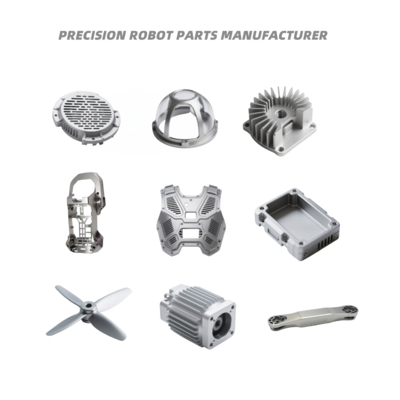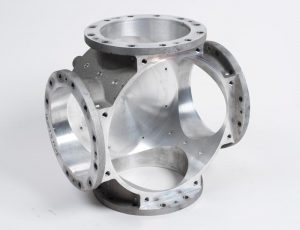Recognizing the Environmental Benefits of Aluminum Factory Techniques
Light weight aluminum factory techniques play a necessary function in advancing sustainability within the production industry. By implementing advanced reusing methods and energy-efficient methods, these strategies considerably lower waste and carbon footprints. Cutting-edge spreading methods additionally improve source preservation efforts. As industries progressively prioritize environmental duty, understanding the full effect of these techniques comes to be crucial. What certain advancements are blazing a trail in this transformation?
The Duty of Aluminum in Lasting Production
Numerous products contribute to lasting manufacturing, light weight aluminum stands out due to its unique residential properties and recyclability. This light-weight metal is not just durable but additionally possesses outstanding rust resistance, making it an ideal selection for different applications, from automobile to construction. Its high strength-to-weight proportion leads to energy cost savings during transportation and use. In addition, light weight aluminum can be recycled forever without shedding its intrinsic top qualities, advertising a circular economic situation.
The manufacturing procedure of light weight aluminum has developed, incorporating energy-efficient methods that decrease carbon footprints. By utilizing eco-friendly energy resources, manufacturers are increasingly lessening the environmental influence related to aluminum production. Furthermore, the usage of recycled light weight aluminum requires significantly much less power compared to extracting and fine-tuning key aluminum, bring about reduced greenhouse gas emissions. As markets look for lasting services, light weight aluminum's flexibility and environmentally friendly characteristics position it as a crucial product in the search of greener production practices.
Advanced Recycling Techniques in Light Weight Aluminum Foundries
Advanced recycling strategies in light weight aluminum shops are changing the means scrap light weight aluminum is refined and recycled. Ingenious approaches, such as closed-loop recycling systems, make it possible for foundries to recover aluminum from manufacturing waste and out-of-date products efficiently. These systems reduce worldly loss and improve the high quality of recycled light weight aluminum, making it a viable choice to key light weight aluminum production.
Furthermore, progressed sorting innovations, including automated optical sorting and X-ray fluorescence, boost the splitting up of aluminum from various other materials, making sure greater purity levels in recycled outputs. This accuracy reduces contamination, which can jeopardize the stability of the final item.
Additionally, the assimilation of advanced melting modern technologies, such as induction melting and energy-efficient heating systems, improves the recycling procedure, lowering energy consumption. Collectively, these developments add to a more lasting aluminum market by lowering dependence on virgin materials and lowering greenhouse gas discharges connected with aluminum production.
Power Performance Improvements in Shop Operations
Energy efficiency improvements in light weight aluminum factory procedures can considerably enhance sustainability methods. Carrying out waste heat recovery systems permits factories to repurpose excess energy, reducing overall power consumption. Additionally, developments in procedure automation enhance procedures, leading to lowered waste and enhanced resource usage.
Waste Warmth Recuperation
Applying waste warmth healing systems in light weight aluminum shops greatly enhances energy efficiency by recording and recycling excess thermal energy generated throughout production processes. These systems help with the conversion of squandered warmth right into useful power, which can be used for different applications within the shop, such as powering or preheating materials equipment. By recovering warm that would certainly or else be expelled right into the atmosphere, foundries can considerably minimize their total power consumption and greenhouse gas discharges. This method not only lowers operational costs but likewise advertises sustainable methods within the market. In addition, the adoption of waste warm recovery technologies lines up with regulatory standards aimed at decreasing environmental impact, making it an essential part of modern light weight aluminum factory procedures.
Refine Automation Perks
Automating processes in light weight aluminum shops can considerably boost power efficiency by optimizing manufacturing process and decreasing waste. By applying sophisticated technologies such as robotics and artificial intelligence, shops can improve operations, minimizing unneeded power intake. Automated systems help with specific control over temperature and product handling, making certain that power is used just when needed. In addition, real-time monitoring enables for prompt adjustments, lowering the threat of energy loss. The integration of automation not just improves productivity yet additionally reduces operational prices, making shops more competitive. Therefore, these energy-efficient methods add significantly to sustainability objectives, minimizing the ecological impact of light weight aluminum manufacturing while fulfilling enhancing market demands - Aluminum Foundry. Enhanced power effectiveness via automation represents an essential step towards greener shop procedures
Minimizing Waste Via Cutting-edge Casting Techniques
Innovative spreading approaches play a vital duty in reducing waste in light weight aluminum factories. Methods such as advanced molding and the use of recyclable products greatly minimize production scrap. These practices not only enhance efficiency but additionally add to a much more sustainable production process.
Advanced Molding Techniques
As sectors progressively prioritize sustainability, progressed molding methods in light weight aluminum foundries become efficient services for reducing waste. These innovative methods, such as 3D printing and accuracy mold production, considerably boost the effectiveness of the casting process. By making use of computer-aided design (CAD) and simulation modern technologies, makers can maximize mold geometry, reducing material use while keeping product honesty. In addition, progressed methods allow the manufacturing of complex shapes that typical methods can not attain, lowering the demand for extra machining and thus lowering scrap material. The adaptability why not check here of these techniques enables quick prototyping, additional lowering preparations and energy usage. On the whole, the application of advanced molding strategies stands for an important action towards eco accountable aluminum manufacturing, aligning with international sustainability objectives.
Recyclable Material Use
Recyclable materials play a critical role in reducing waste within light weight aluminum shops, changing the spreading landscape with their reliable use. By integrating scrap light weight aluminum and other recyclable components right into the production procedure, factories can substantially decrease the demand for virgin materials. This not just conserves natural deposits but also decreases power intake connected with mining and refining. Cutting-edge casting methods, such as die spreading and sand spreading, permit smooth combination of these materials, ensuring high-grade outcomes. Furthermore, making use of recyclable materials promotes a round economy, where resources are continually reused and repurposed, minimizing landfill payments. Inevitably, the tactical usage of recyclables boosts sustainability while advertising cost-effectiveness in light weight aluminum shop operations.
Reducing Manufacturing Scrap

Life Cycle Evaluation of Aluminum Products
Aluminum is extensively acknowledged for its light-weight and sturdy buildings, a thorough Life Cycle Analysis (LCA) reveals the environmental impacts associated with its disposal, production, and usage. The LCA procedure examines the energy consumption, greenhouse gas exhausts, and source depletion linked to light weight aluminum items from removal of bauxite ore to end-of-life administration. Main light weight aluminum production is energy-intensive, frequently depending on fossil gas, which adds significantly to carbon impacts. On the other hand, recycling light weight aluminum provides substantial ecological benefits, as it uses only a fraction of the energy required for main manufacturing. The recycling process reduces land fill waste and preserves all-natural resources. The LCA also takes into consideration the item's long life and capacity for reuse, emphasizing the relevance of sustainable style. In general, comprehending the life cycle impacts of aluminum items is vital for making notified decisions that focus on ecological sustainability within the industry.
Situation Studies: Successful Sustainable Practices in the Sector
The aluminum industry has actually started to accept innovative lasting practices that deal with the ecological difficulties determined in Life process Assessments. One significant case is a leading shop that executed a closed-loop recycling system, considerably decreasing waste and energy consumption. By reusing scrap aluminum in production, the facility accomplished a 40% decrease in its carbon footprint.
Another example includes a producer that adopted renewable resource sources, powering its operations with solar and wind energy - Precision aluminum casting. This shift not just lowered greenhouse gas exhausts but likewise improved the firm's track record amongst eco conscious consumers
In addition, a 3rd shop has purchased innovative spreading techniques, which maximize material usage and reduce defects, better decreasing resource usage. These study illustrate that the aluminum industry is qualified of integrating lasting techniques, demonstrating both environmental duty and economic stability, eventually adding to a much more lasting future.
Frequently Asked Inquiries
Just How Does Light weight aluminum Contrast to Various Other Steels in Sustainability?
Light weight aluminum is usually taken into consideration extra sustainable than lots of steels as a result of its recyclability, reduced power needs for manufacturing, and reduced environmental effect. Its lifecycle effectiveness surpasses that of steel and copper in numerous applications.
What Is the Carbon Impact of Light Weight Aluminum Foundry Processes?
The carbon impact of light weight aluminum foundry processes differs, commonly varying from 4 to 15 metric lots of carbon dioxide per lots of light weight aluminum generated. Aspects affecting this consist of power sources, technology, and the effectiveness of operations.
Are There Health And Wellness Risks Related To Light Weight Aluminum Factory Workflow?

What Are the Prices Connected With Lasting Light Weight Aluminum Techniques?
The expenses related to lasting light weight aluminum techniques include greater initial financial investments in innovation, potential increases in functional expenditures, and continuous upkeep. Nonetheless, these are usually countered by long-term financial savings and reduced environmental effect.
How Does Aluminum Recycling Impact Citizen Communities?
Light weight aluminum reusing favorably influences local neighborhoods by developing tasks, lowering garbage dump waste, and lowering power costs. It promotes financial development and promotes environmental stewardship, causing healthier living problems and enhanced neighborhood interaction in sustainability campaigns.
Additionally, the use of recycled light weight aluminum needs significantly less energy contrasted to removing and refining primary light weight aluminum, leading to lower greenhouse gas emissions. Advanced recycling methods in light weight aluminum foundries are reinventing reference the way scrap aluminum is refined and recycled. Aluminum Casting Company. Executing waste heat recovery systems in aluminum factories substantially enhances energy effectiveness by recording and recycling excess thermal energy created during manufacturing procedures. Automating procedures in aluminum shops can significantly improve power performance by enhancing production workflows and lowering waste. The carbon impact of aluminum factory processes varies, usually varying from 4 to 15 statistics bunches of Carbon dioxide per lot of light weight aluminum produced